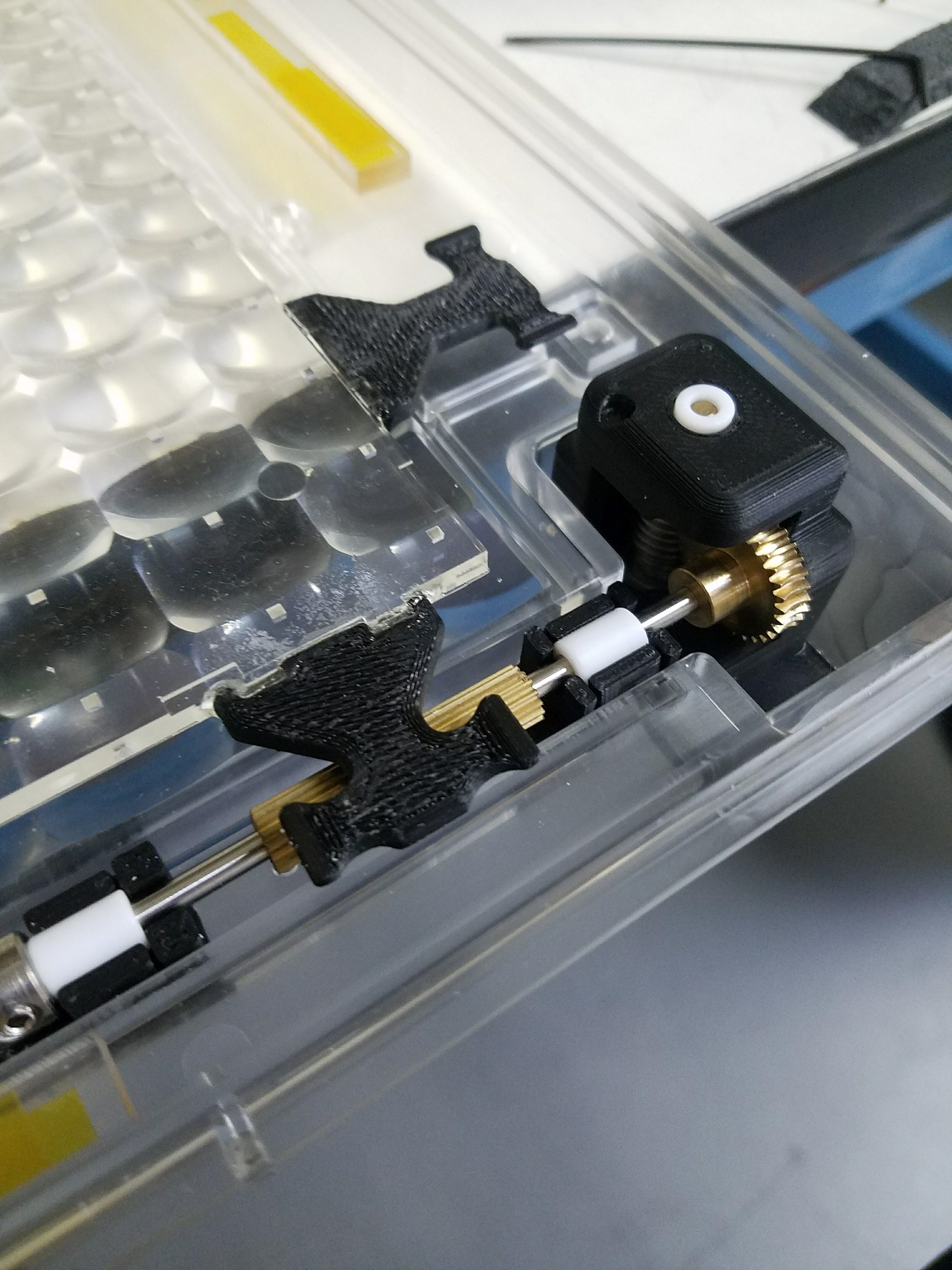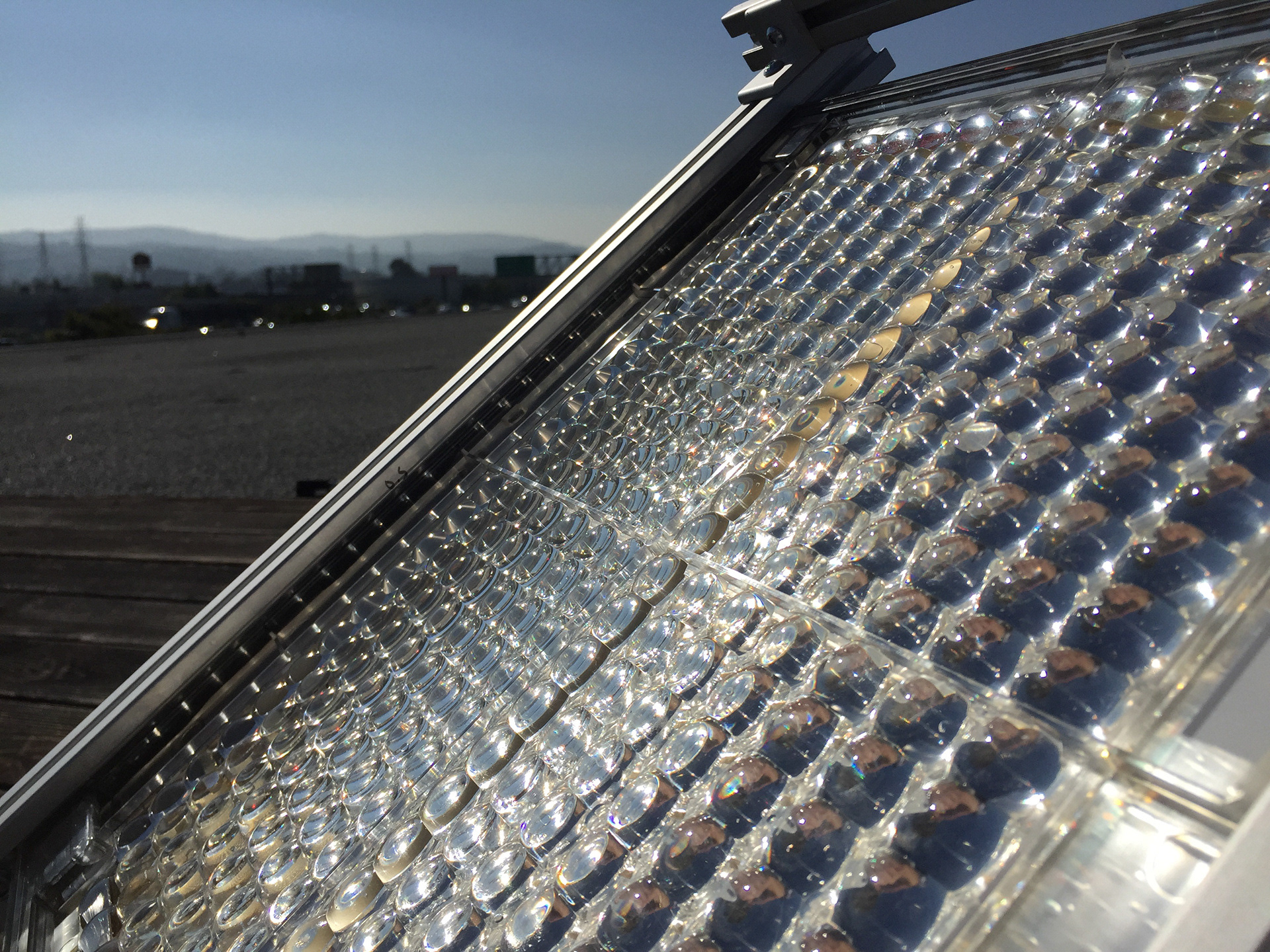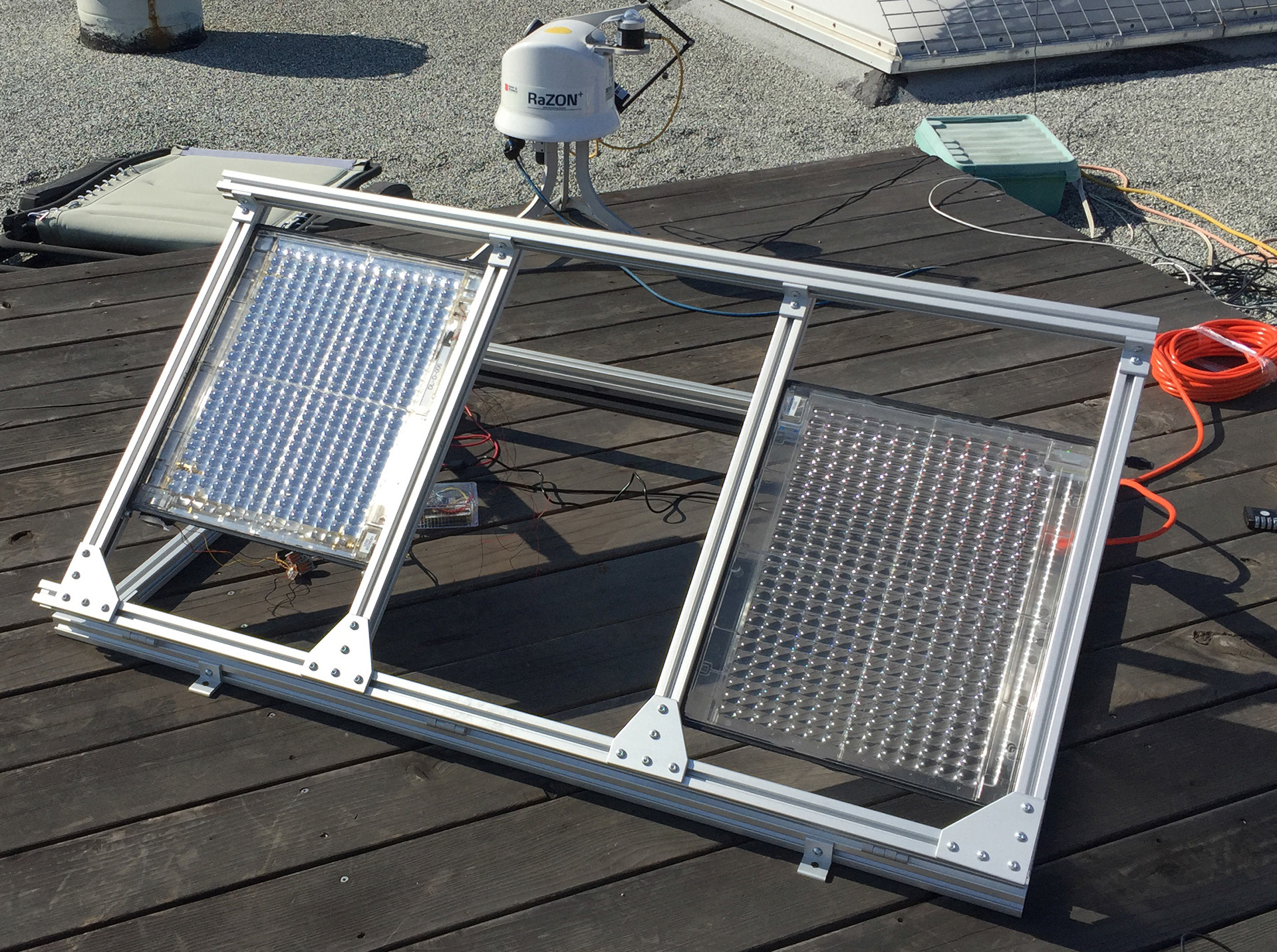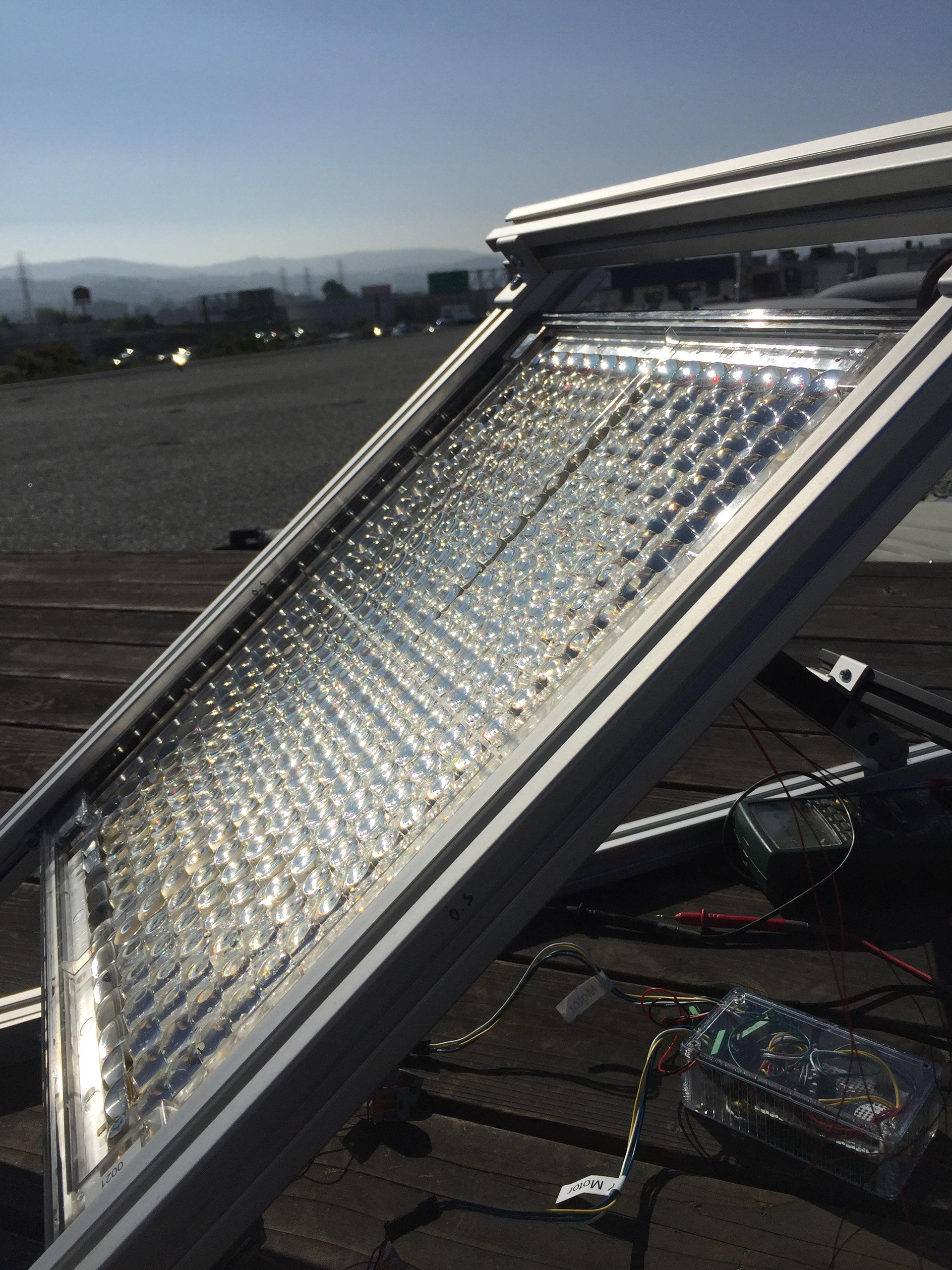About the project
A novel wide-angle concentrator photovoltaic (CPV) panel for electricity generation. These panels adjust their optical properties internally to track the sun across the sky and focus direct sunlight at high concentrations onto small highly-efficient photovoltaic cells. Glint’s wide-angle modules can be placed on standard low-precision trackers or even in stationary configurations such as on rooftops, unlike conventional CPV systems that can accept light from only a very narrow range of angles and therefore require precise positioning via large and costly two-axis trackers. This technology can significantly reduce the cost of solar power by enabling the use of high-efficiency photovoltaic cells in very low-cost system architecture.
Scope
Design, develop, test, and implement an electro-mechanical system that will be capable of moving the floater (plastic sheet with solar modules inside the panel) inside the panel in X and Y directions. The system has to have ultra-high positioning precision and repeatability of motion.
Challenges
- Only 4mm width of space between lenses could be utilized for the mechanical system
- Mechanical system only can occupy space on the sides of the panel
- Panel should be filled with silicone oil and sealed
- Mechanical system should be simple, reliable, and easy to assemble
- Mechanical system only can occupy space on the sides of the panel
- Panel should be filled with silicone oil and sealed
- Mechanical system should be simple, reliable, and easy to assemble
Deliverables
- Nine concepts of mechanical systems developed
- Three proof of concept mechanical prototypes built - "Racks and Pinions" concept selected
- Mechanically functional prototype built and tested
- Concept is used to design parts that optimized for manufacturing and assembly
- Received parts are tested and used to build fully functional prototypes
- US and international patents (link)
- Three proof of concept mechanical prototypes built - "Racks and Pinions" concept selected
- Mechanically functional prototype built and tested
- Concept is used to design parts that optimized for manufacturing and assembly
- Received parts are tested and used to build fully functional prototypes
- US and international patents (link)
Proof of concept prototype
First Gen prototype
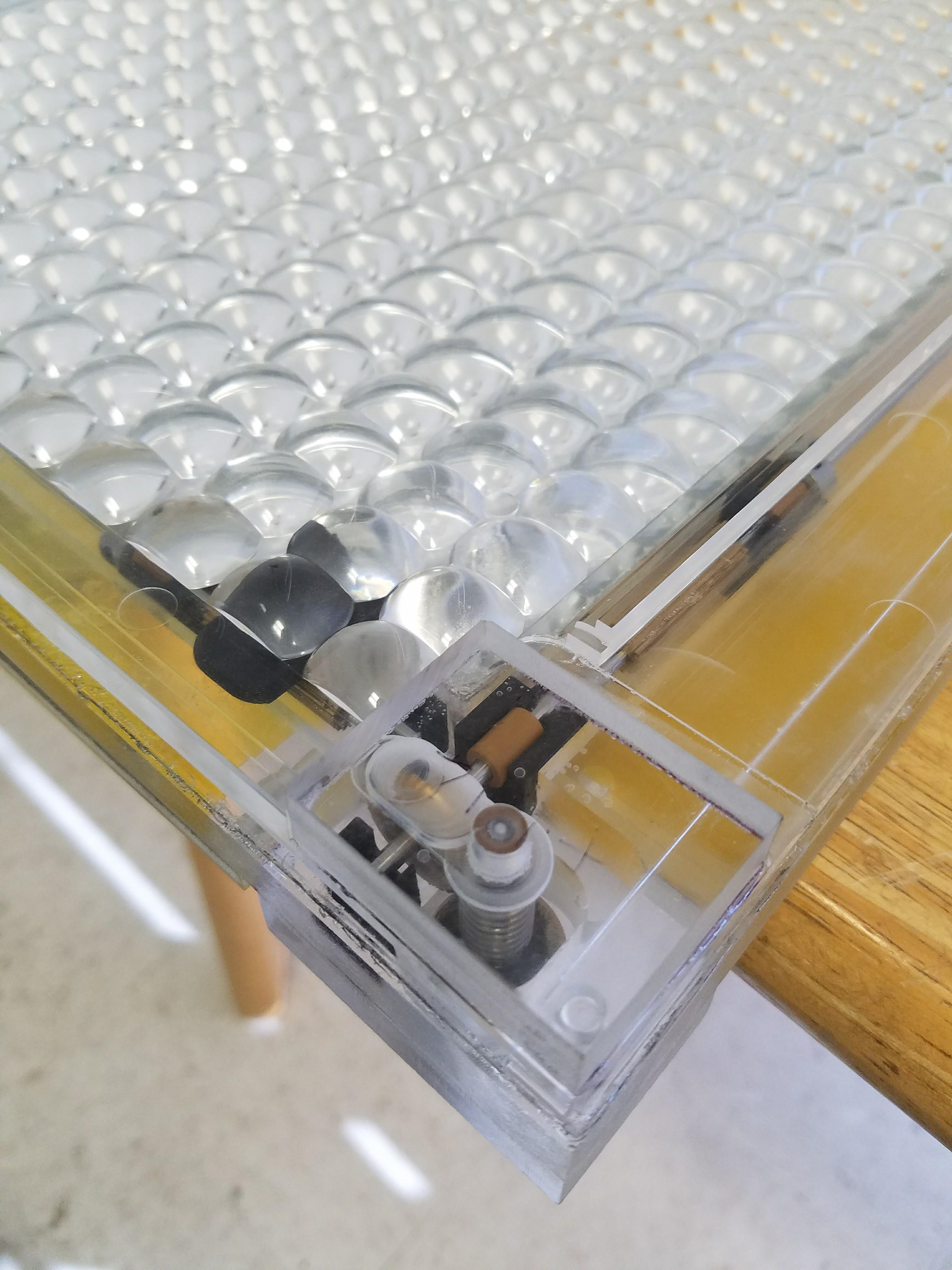
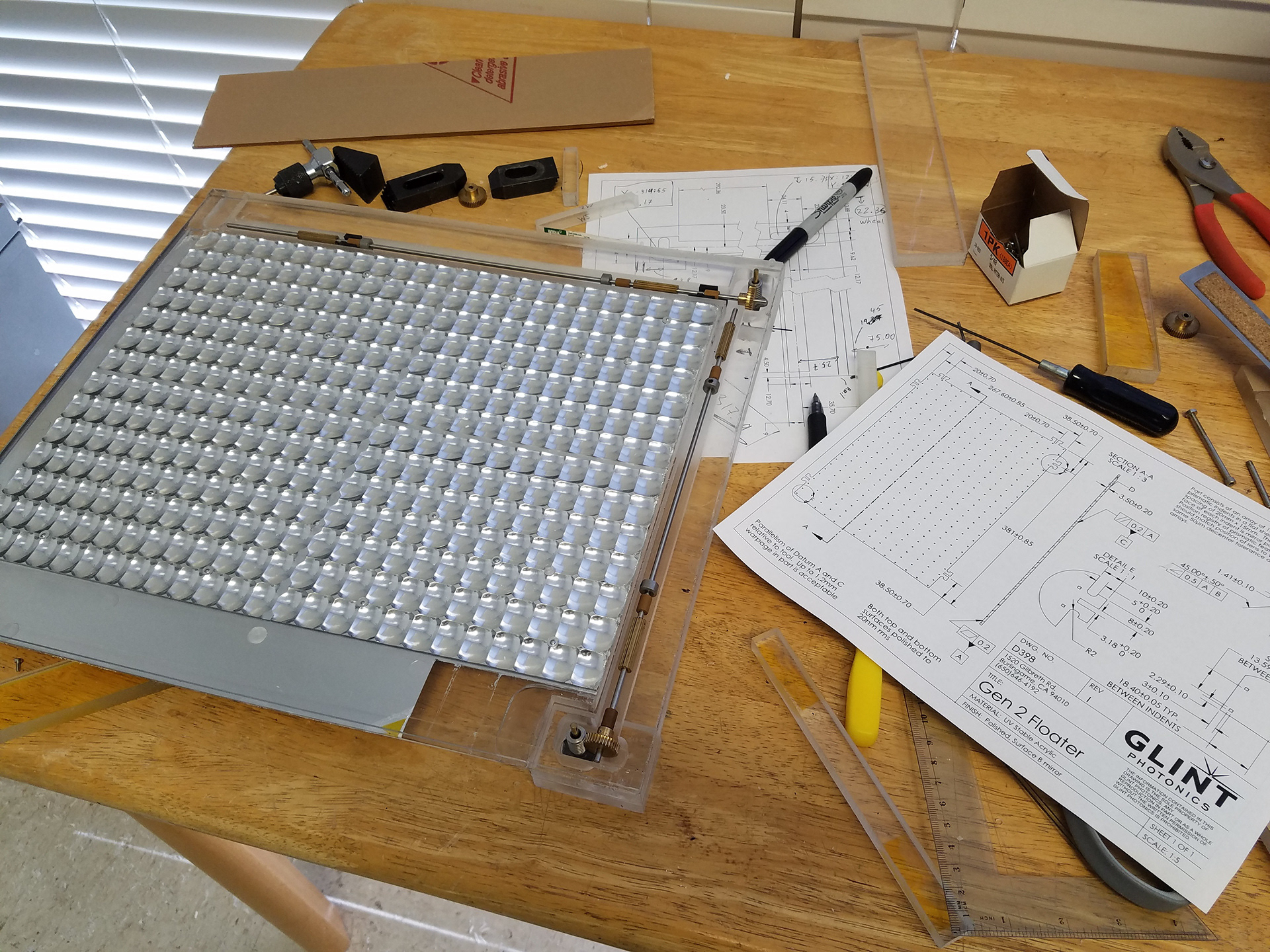
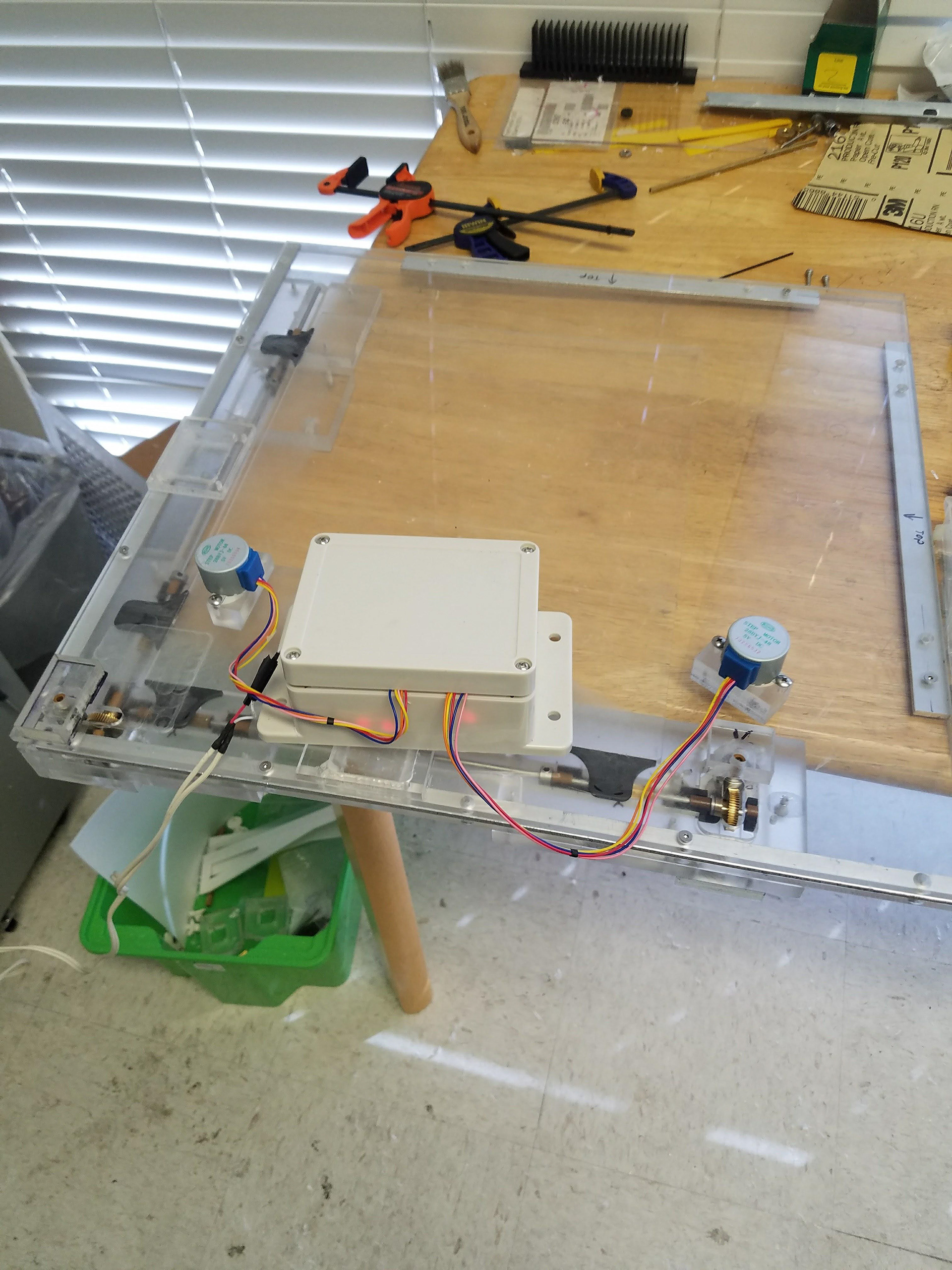
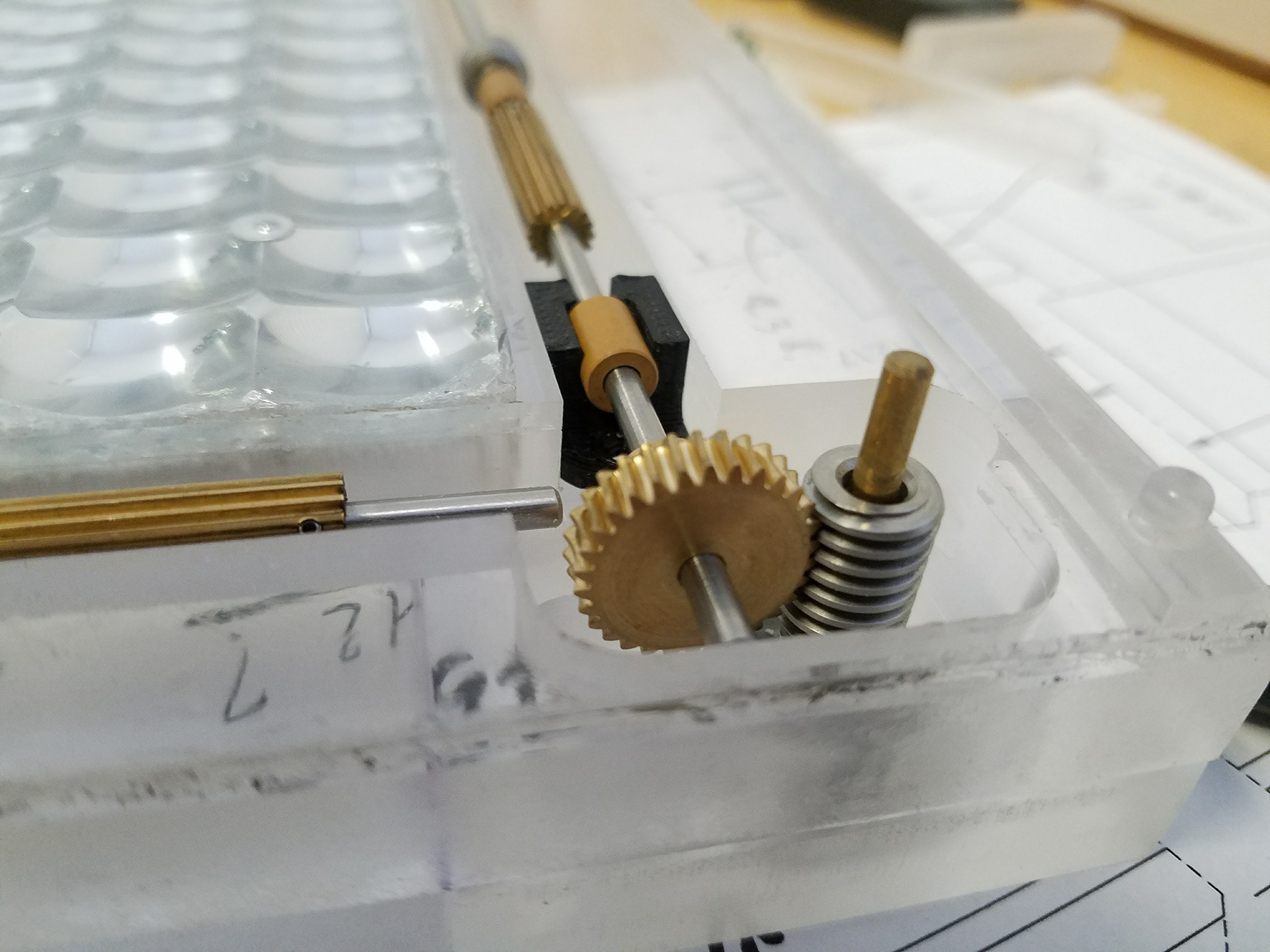
Second Gen prototype design
DFMA
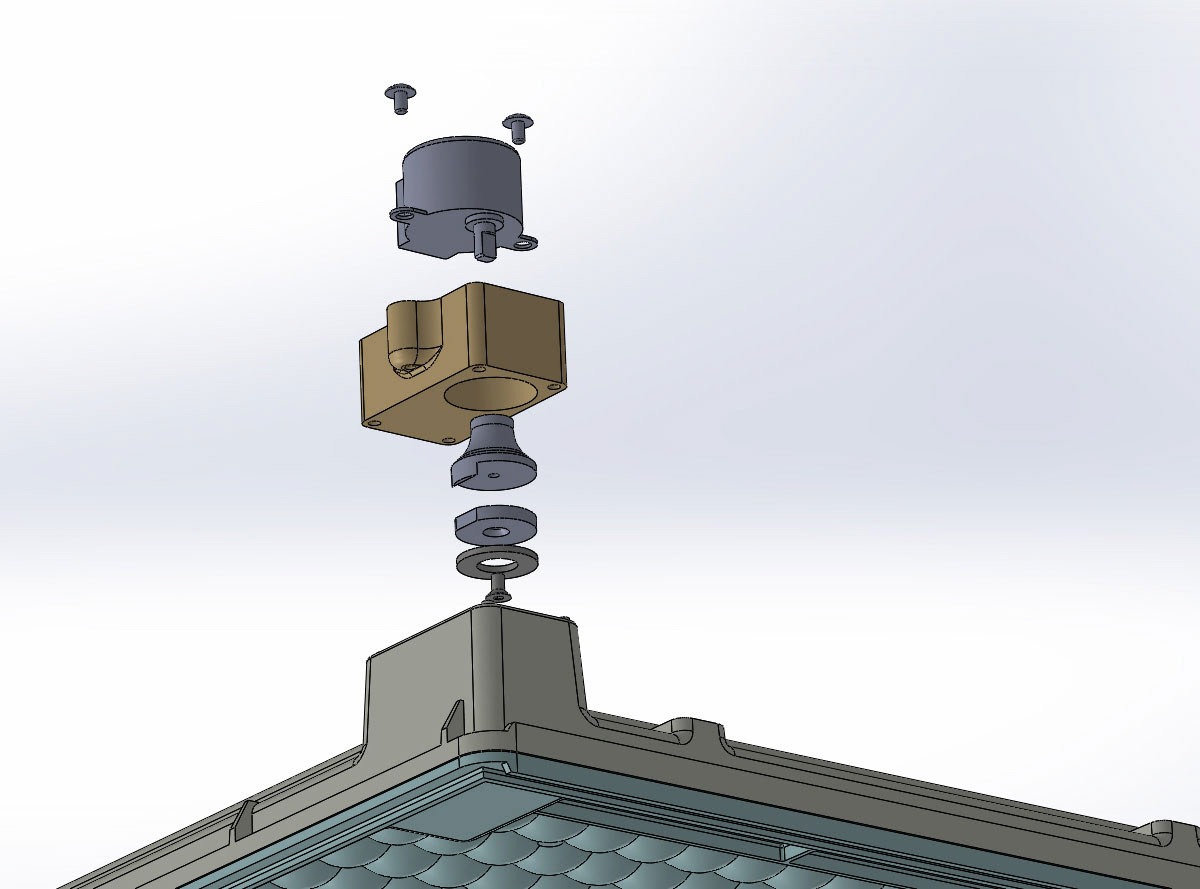
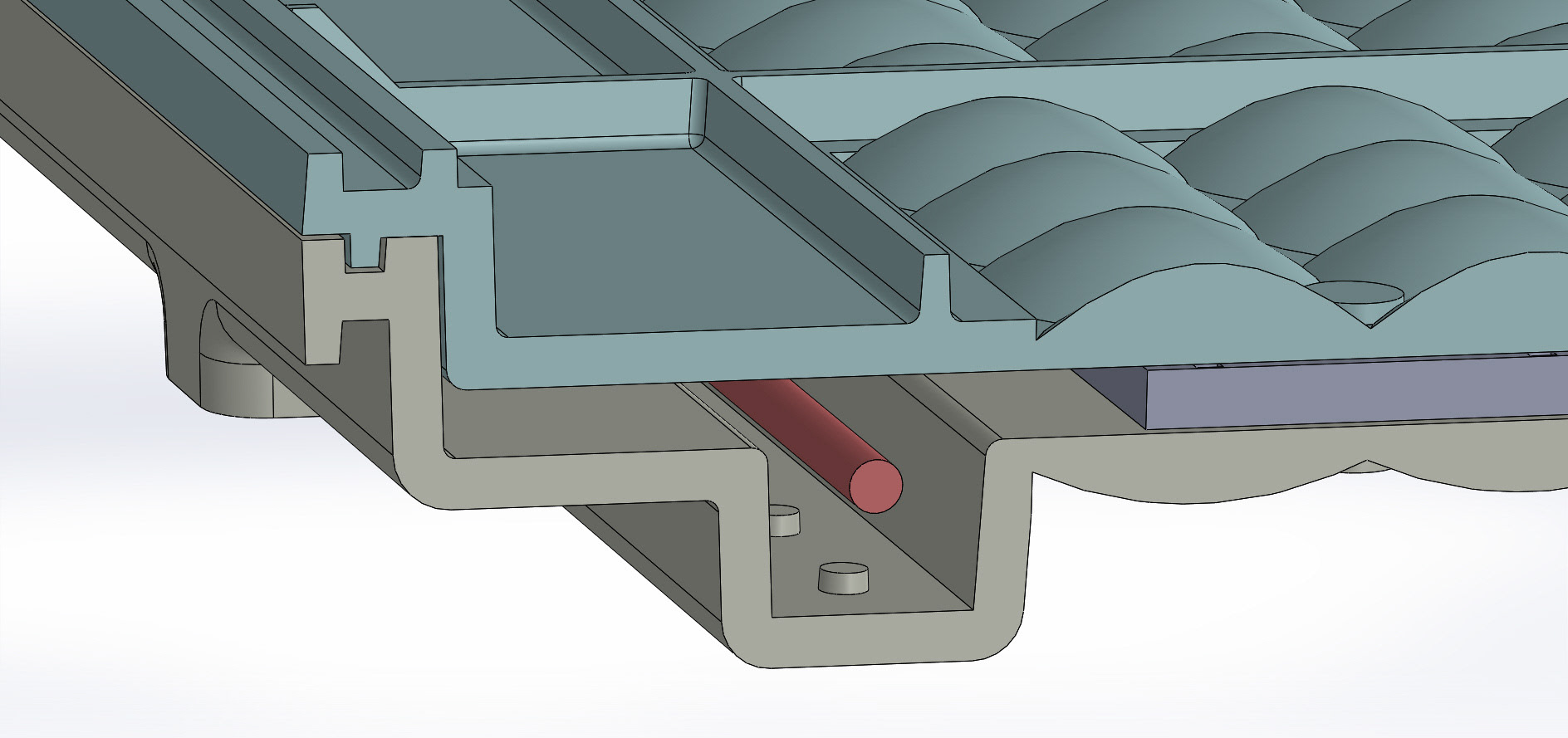
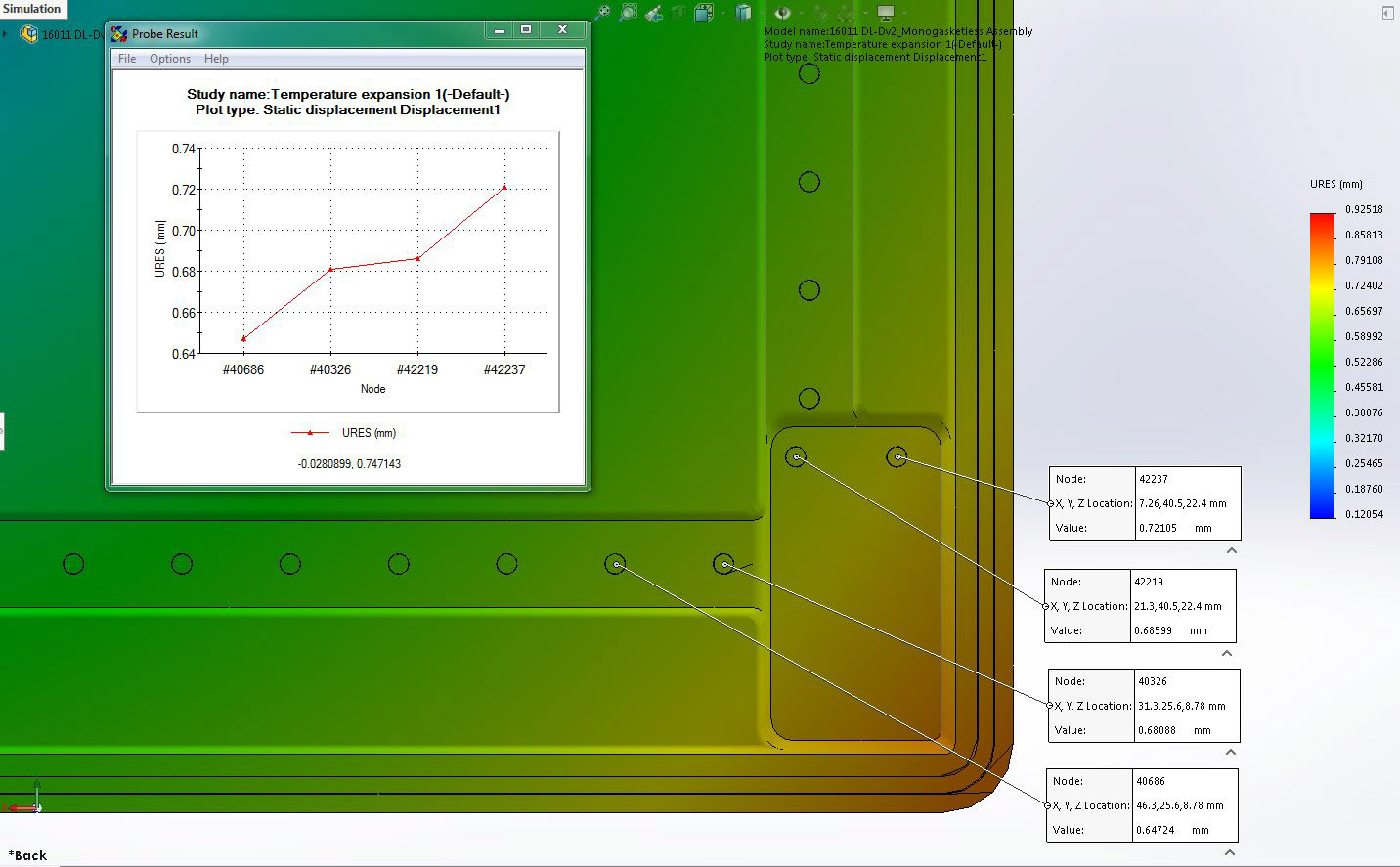
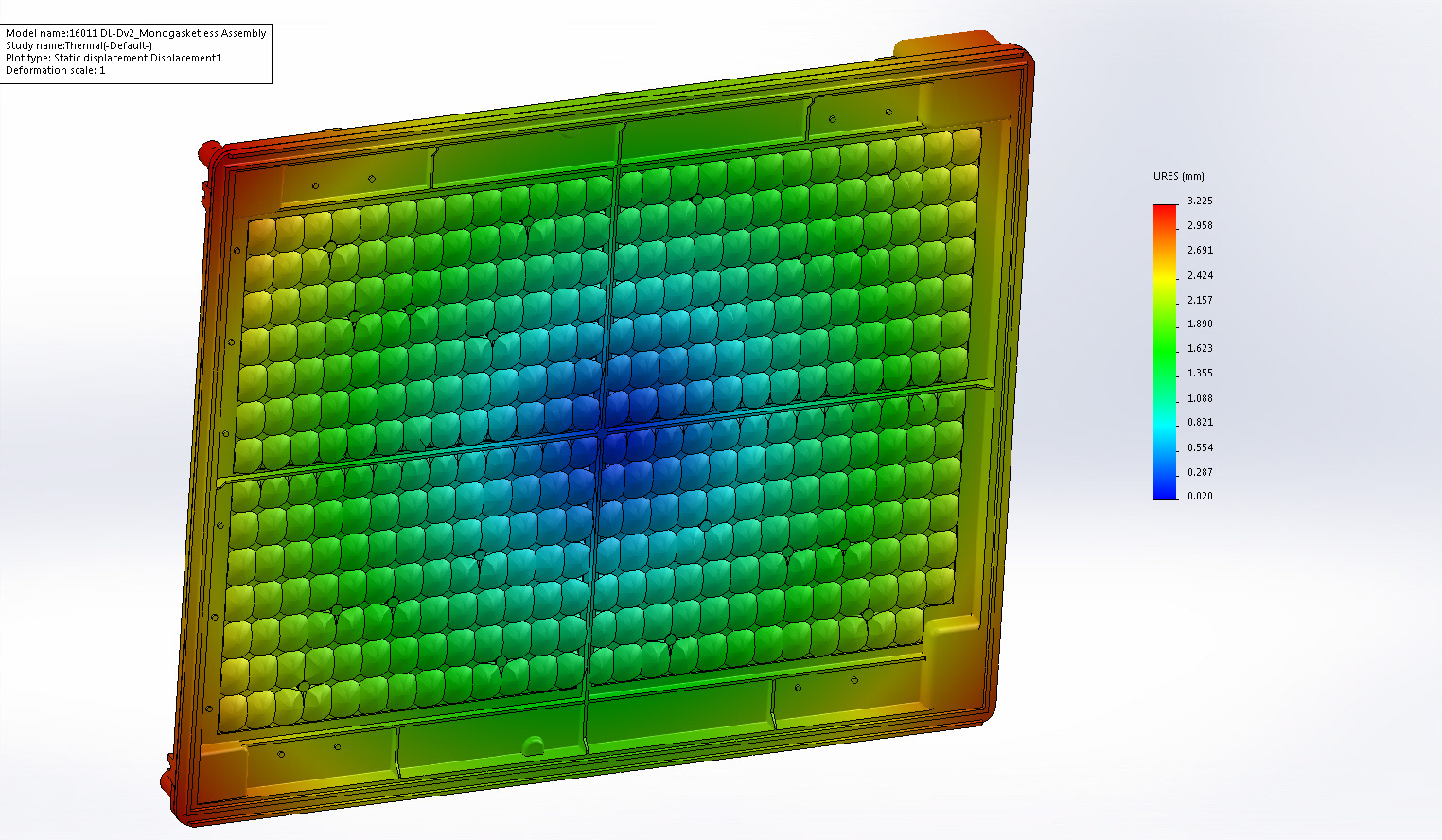
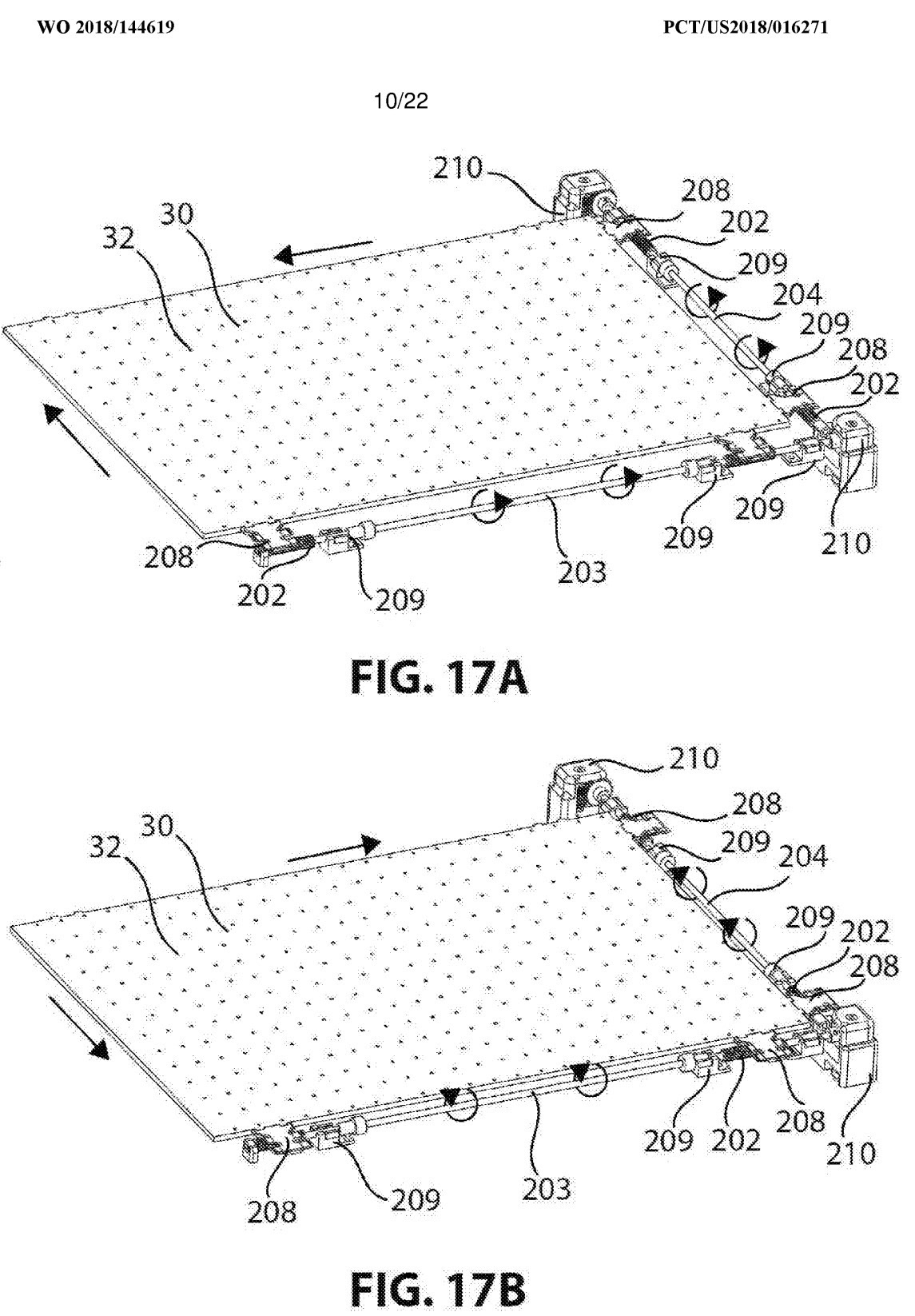
Second Generation Prototype Testing
